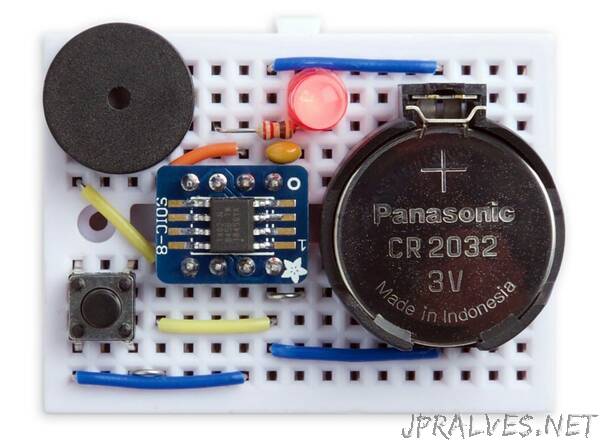
“This article describes how to use the new 0-series and 1-series ATtiny microcontrollers in low-power projects, taking advantage of sleep mode to maximise the battery life and avoid the need for an on/off switch. The project is a simple 15-minute timer that flashes an LED once every 2 seconds while it is counting down, and then beeps a piezo buzzer when the time has expired.
You could use it as the basis for an egg timer, a bath-overflow alarm, or any other fixed timer application.
Introduction
I thought it would be interesting to compare the low-power performance of the new 0-series ATtiny microcontrollers with my old favourite, the ATtiny85. One of my first projects based on the ATtiny85 was a simple 15-minute timer that took advantage of the low-power sleep mode to avoid the need for an on/off switch, and this has turned out to be one of my most popular articles: ATtiny Low Power.
I thought it would be interesting to try and reproduce the project with one of the new 0-series ATtiny chips from Microchip, to compare the power consumption in the low-power sleep mode between the two devices. For more information about these chips see Getting Started with the New ATtiny Chips.
For the comparison I chose the chip that’s closest in specification to the ATtiny85: the 0-series ATtiny402, an 8-pin microcontroller with 4Kbytes of flash memory. The project doesn’t use much memory so the 2Kbyte ATtiny202 would do equally well.”
